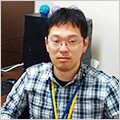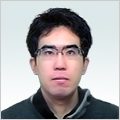
The 116th AICS Cafe
Date and Time: Wed. July 19, 2017, 15:30-16:30
Place: Workshop room (6th floor) at AICS
Title: Leading Research on Data Assimilation in Numerical Weather Prediction
Speaker: Shunji Kotsuki (Data Assimilation Research Team)
Presentation Language: Japanese
Presentation Material: English
Estimating an accurate initial condition is very important for numerical weather prediction (NWP) because the weather system is known to be sensitive to the initial condition. Data assimilation plays an essential role in NWP to estimate the best initial condition using both simulation and observation data with their error statistics provided. Data Assimilation Research Team has been developing global and regional NWP systems known as the NICAM-LETKF and SCALE-LETKF, in which the ensemble Kalman filter, an advanced data assimilation method, is used. In this talk, I will present a brief introduction to data assimilation in NWP, and will convey some flavor of cutting-edge research such as precipitation data assimilation.












